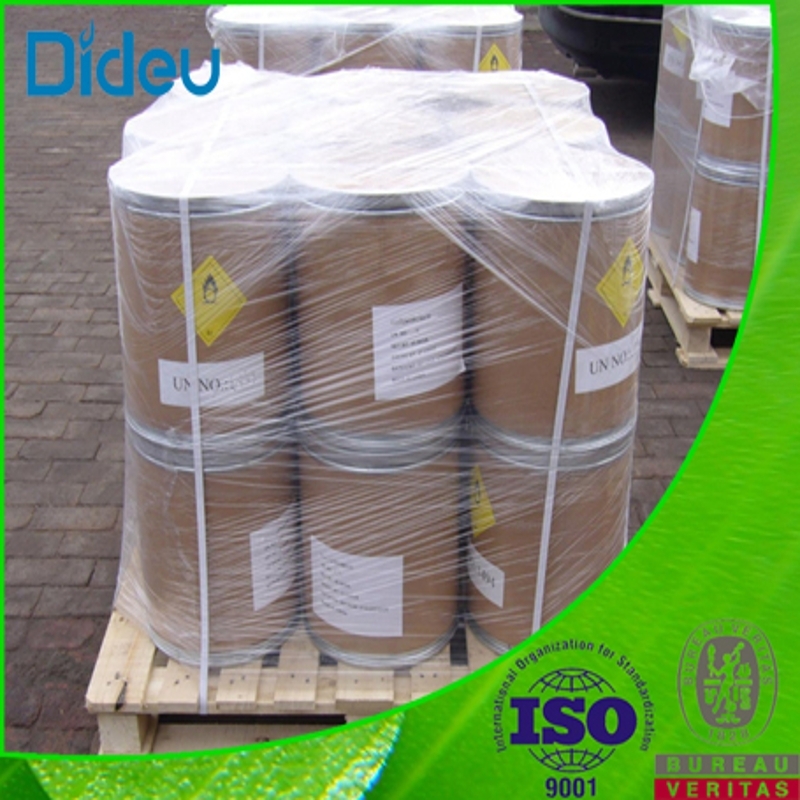-
Categories
-
Pharmaceutical Intermediates
-
Active Pharmaceutical Ingredients
-
Food Additives
- Industrial Coatings
- Agrochemicals
- Dyes and Pigments
- Surfactant
- Flavors and Fragrances
- Chemical Reagents
- Catalyst and Auxiliary
- Natural Products
- Inorganic Chemistry
-
Organic Chemistry
-
Biochemical Engineering
- Analytical Chemistry
-
Cosmetic Ingredient
- Water Treatment Chemical
-
Pharmaceutical Intermediates
Promotion
ECHEMI Mall
Wholesale
Weekly Price
Exhibition
News
-
Trade Service
Diabetic kidney disease (DKD) is a common and frequent disease in China, and it is also the main cause of
end-stage renal disease (ESRD).
21 In 1 year, the Nephrology Branch of the Chinese Medical Association issued the "Chinese Guidelines for the Clinical Diagnosis and Treatment of Diabetic Kidney Diseases" (hereinafter referred to as the guidelines), which put forward suggestions for the diagnosis, renal biopsy, treatment, treatment of comorbidities, rational drug use, and referral of DKD.
The strength of expert recommendations in this guideline refers to the GRADE quality classification of evidence and the strength of recommendation system developed by the World Health Organization (WHO) and others, as follows: A: the evidence is based on multiple clinical randomized controlled trials (RCTs) or meta-analyses; B: evidence based on a single clinical RCT or multiple non-randomised controlled studies; C: evidence is based on non-randomised controlled studies or expert consensus; D: Evidence is based on case observations, case reports
The guidelines propose that the diagnosis of DKD is as follows: meet the diagnostic criteria for DM established by ADA in 2020, have a clear history of DM, have a causal relationship with urine protein, renal function changes, and exclude other primary and secondary glomerular diseases and systemic diseases, and can diagnose DKD
if one of the following conditions is met.
1.
Random urine albumin/creatinine ratio (UACR) ≥ 30mg/g or urinary albumin excretion rate (UAER) ≥30mg/24h, and repeat the examination of UACR or UAER within 3~6 months, 2 out of 3 times reach or exceed the critical value; Exclude other interfering factors
such as infection.
(A)
2.
Estimated glomerular filtration rate (eGFR) < 60ml/(min•1.
73m2) for more than
3 months.
(B)
3.
Renal biopsy is consistent with DKD pathological changes
.
(A)
The stages of diabetic kidney disease are summarized as follows (table 1):
Table 1 Clinical stage, pathological grade and prevention and treatment of diabetic kidney disease
There is currently a lack of non-invasive specific biomarkers for the diagnosis of DKD, and renal biopsy is an important basis for
confirming the diagnosis of DKD.
Because of the wide variation in the treatment and prognosis of patients with DKD, NDKD, and DKD plus NDKD, renal biopsy is of great value
in confirming DKD.
Patients have no contraindications to renal biopsy and may be considered in the following situations
.
1.
DM history < 5 years of massive proteinuria or renal insufficiency<b10>.
(A)
2.
Massive proteinuria or nephrotic syndrome
in the short term.
(A)
3.
Urine sediment suggests "active" glomerular hematuria
.
(B)
4.
Rapid decline in unexplained eGFR or more than 30%
decrease in eGFR within 3 months after ACE inhibitor/ARB treatment.
(B)
5.
Massive proteinuria without DR.
(A)
6.
Intractable hypertension
.
(C)
7.
Have clinical symptoms, signs or laboratory tests
of systemic disease.
(A)
8.
If pathological grading or condition assessment of DKD is required, renal biopsy
can be considered as appropriate.
(B)
The treatment of DKD mainly includes six aspects
: life management, blood sugar control, blood pressure control, proteinuria control, blood lipid regulation and uric acid control.
1.
It is recommended that all patients with DKD reduce blood sugar reasonably, strictly and reasonably control blood glucose levels, and delay the occurrence and progression
of DKD.
(A)
2.
It is recommended to follow the principle of individualization and manage the target value of glycated hemoglobin (HbA1c) in layers to avoid the occurrence of
hypoglycemia.
(A)
3.
Metformin is the preferred drug and basic drug for blood sugar control in patients with T2DKD, and patients with DKD need to adjust the dosage or stop
it when they have renal insufficiency.
(A)
4.
Glucagon-like peptide-1 (GLP-1) receptor agonists can be used in patients with DKD G1~3, and ESRD patients are not recommended
.
(B)
5.
Dipeptidyl peptidase 4 (DPP-4) inhibitors may reduce the risk of DKD progression, but there is a lack of evidence
for their effect on renal endpoint events such as DKD-ESRD.
(B)
6.
In patients with DKD, blood glucose is not up to standard after using metformin, and a sodium-glucose cotransporter 2 (SGLT2) inhibitor
is recommended.
(A)
7.
Insulin can be used as the preferred hypoglycemic drug
for patients with DKD during pregnancy.
(C)
8.
For elderly patients, basal insulin should be preferred as much as possible to avoid the occurrence of
hypoglycemia.
(C)
9.
Self-glucose monitoring helps to improve the efficacy of DKD treatment, continuous glucose monitoring (CGM) helps reduce the risk of hypoglycemia, and the percentage of time (TIR) and HbA1c of blood glucose within the target range can be used as important parameters
to monitor the level of glycemic control.
(B)
1.
ACE inhibitor/ARB drugs are preferred for the treatment of T2DKD microalbuminuria.
(A)
2.
The use of ACE inhibitors/ARB in large doses may benefit the kidneys more
.
(C)
3.
ACEI/ARB for the prevention of T2DKD
is not recommended for T2DM patients without hypertension, no albuminuria, and normal eGFR.
(B)
4.
SGLT2 inhibitors have the effect
of reducing proteinuria in the treatment of microalbuminuria T2DKD.
(A)
5.
ACE inhibitor/ARB drugs
are preferred for the treatment of massive albuminuria of T2DKD.
(A)
6.
In the treatment of T2DKD with massive albuminuria, the combination of ACE inhibitor and ARB
is not recommended.
(A)
7.
Aliskiren in combination with ACE inhibitors/ARBs for T2DKD
is not recommended.
(B)
8.
Pheneridone can be used in combination with ACE inhibitors/ARBs to reduce urine protein levels in patients with T2DKD (B)
9.
Vitamin D receptor agonist therapy
is not recommended for patients with T2DKD.
(B)
10.
SGLT2 inhibitors have protein-reducing effects in T2DKD with massive albuminuria
.
(A)
Figure 1 Antihypertensive regimen for diabetes mellitus with hypertension and proteinuria
Dyslipidemia is common in patients with DKD, and the lipid metabolism spectrum is mainly manifested as TG, very low-density lipoprotein (VLDL), increased LDL⁃C, and decreased
HDL⁃C.
Hyperlipidaemia can damage blood vessels, disrupt endothelial cells and their barrier function, and is one of
the major risk factors for vascular complications in patients with DKD.
Therefore, it is crucial
to correct abnormal lipid metabolism.
Table 3 Lipid-lowering therapy strategies for patients with diabetes
With regard to the management of comorbidities, guidelines outline recommendations
for the management of intractable oedema, anaemia, malnutrition, renal insufficiency, cardiovascular complications, peripheral vascular disease, peripheral nerves, and autonomic neuropathy.
The figure below shows a flowchart of glucose-lowering drug selection in patients with diabetes with heart failure or chronic kidney disease (Figure 2).
Figure 2 Selection of hypoglycemic agents in patients with diabetes with heart failure or chronic kidney disease
For the special population of DM complicated by CKD, how to accurately and rationally use drugs, standardize diagnosis and treatment, and refine management still needs to be improved, which is also a key issue
that needs to be solved urgently in our clinical work.
This guide incorporates new theories and technologies for the clinical diagnosis and treatment of DKD at home and abroad, which has very important guiding significance for our daily work and is worthy of further study
.







